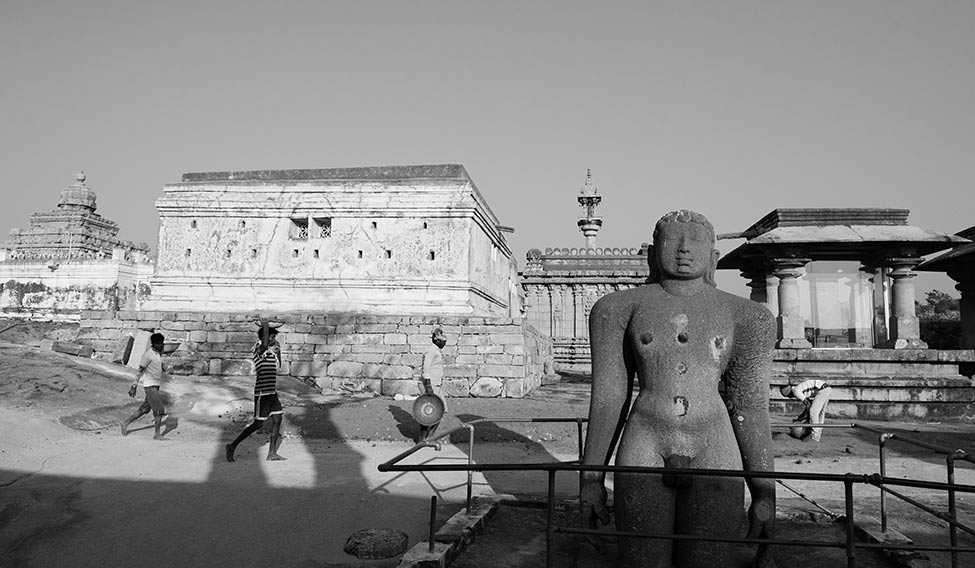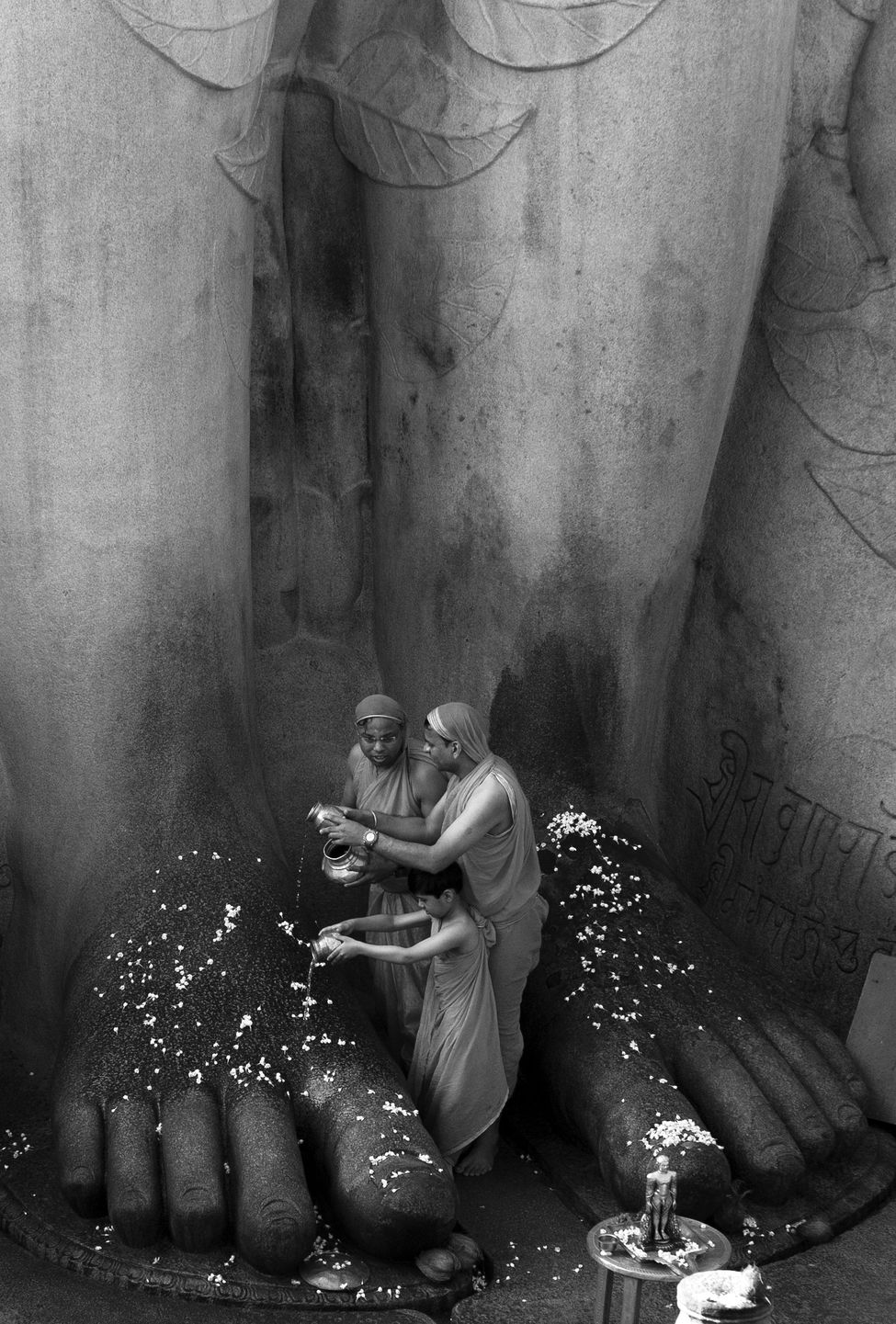Gomateshwara aka Bahubali, the one with powerful arms. At 58ft, the statue of the Jain monk stands tall on Vindhyagiri hill in Shravanabelagola. The town in Karnataka’s Hassan district is becoming a magnet for Digambara Jains, as the community prepares for the mahamastakabhisheka—the great anointing—done once in 12 years. This year’s event, which will be held from February 7 to 26, will be the 88th anointing.
A high-tech scaffolding, costing Rs 11 crore, is slowly wrapping itself around the statue. From this stage, monks will anoint the statue with curd, milk, coconut water, sugarcane juice, and three powders—vermillion, turmeric and sandalwood.
Legend has it that Bahubali—son of Rishabhnath, the first of the 24 Tirthankaras—meditated for a year, standing. To illustrate this, the statue has a vine winding itself on one leg; on the other, a snake is crawling up. In the backdrop is an anthill, also present in the story of another yogi—Valmiki, who gave us the Ramayan. Bahubali is a Digambara, literally ‘sky clad’.
 Workers repair the floor around the statue of Bharata, Bahubali’s elder brother, at Chandragiri hill. Legend has it that Bahubali defeated his elder brother in an epic fight. Disturbed by the violence, Bahubali became an ascetic.
Workers repair the floor around the statue of Bharata, Bahubali’s elder brother, at Chandragiri hill. Legend has it that Bahubali defeated his elder brother in an epic fight. Disturbed by the violence, Bahubali became an ascetic.
The mahamastakabhisheka is jointly organised by the government of Karnataka and the Digambara Jain monastery of Shravanabelagola. Roads leading to the town have been re-surfaced and 12 massive temporary townships are under construction.
Hundreds of Digambara Jain monks and nuns have started arriving. And, all of them carry just three things—a peacock-feather broom, a wooden vessel called kamandalu and scriptures. With the broom, they sweep a place clear of insects before sitting. The kamandalu holds water for ritual washing. They eat once a day, from what devotees offer, and sleep on the floor.
Digambara monks renounce clothing; the nuns are clad in white. Theirs is a simple, monochromatic life. Timeless—like Gomateshwara, like truth.
 Devotees anoint the feet of the Bahubali statue. The monolith was commissioned in AD 981 by Chavundaraaya, military commander of the Western Ganga dynasty. While pilgrims can always anoint the small metal statute of Bahubali kept at the feet of the monolith, the mahamastakabhisheka is held only once in 12 years.
Devotees anoint the feet of the Bahubali statue. The monolith was commissioned in AD 981 by Chavundaraaya, military commander of the Western Ganga dynasty. While pilgrims can always anoint the small metal statute of Bahubali kept at the feet of the monolith, the mahamastakabhisheka is held only once in 12 years.






